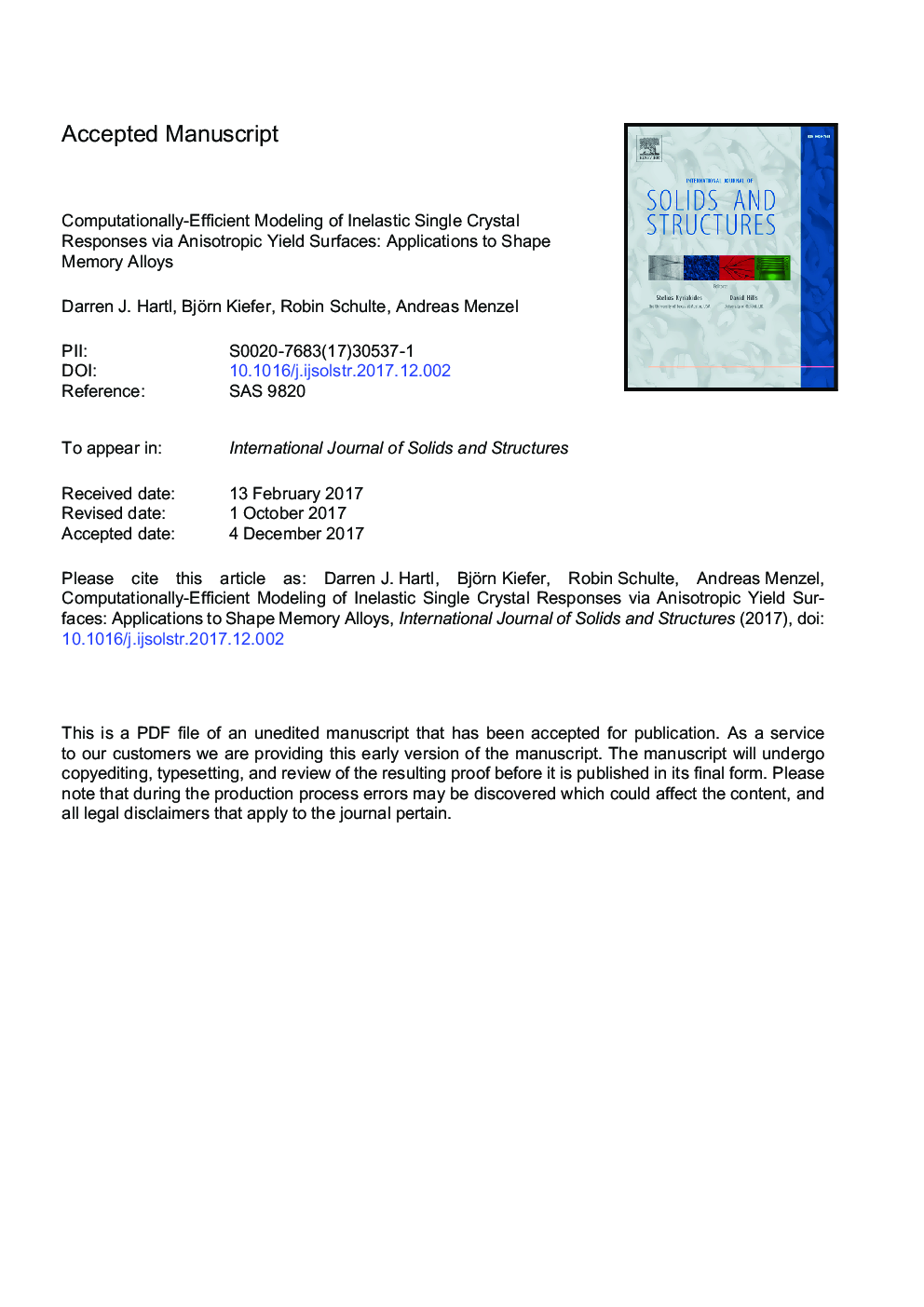| Article ID | Journal | Published Year | Pages | File Type |
|---|---|---|---|---|
| 6748382 | International Journal of Solids and Structures | 2018 | 56 Pages |
Abstract
Phenomenological constitutive models of inelastic responses based on the methods of classical plasticity provide several advantages, especially in terms of computational efficiency. For this reason, they are attractive for the analysis of complex boundary value problems comprising large computational domains. However, for the analysis of problems dominated by single crystal behavior (e.g., inclusion, granular interaction problems or inter-granular fracture), such approaches are often limited by the symmetry assumptions inherent in the stress invariants used to form yield-type criteria. On the other hand, the high computational effort associated with micro-mechanical or crystal plasticity-type models usually prevents their use in large structural simulations, multi-scale analyses, or design and property optimization computations. The goal of the present work is to establish a modeling strategy that captures micro-scale single-crystalline sma responses with sufficient fidelity at the computational cost of a phenomenological macro-scale model. Its central idea is to employ an anisotropic transformation yield criterion with sufficiently rich symmetry class-which can directly be adopted from the literature on plasticity theory-at the single crystal level. This approach is conceptually fundamentally different from the common use of anisotropic yield functions to capture tension-compression asymmetry and texture-induced anisotropy in poly-crystalline SMAs. In our model, the required anisotropy parameters are calibrated either from experimental data for single crystal responses, theoretical considerations or micro-scale computations. The model thus efficiently predicts single crystal behaviors and can be applied to the analysis of complex boundary value problems. In this work we consider the application of this approach to the modeling of shape memory alloys (SMAs), though its potential utility is much broader. Example analyses of SMA single crystals that include non-transforming precipitates and poly-crystalline aggregates are considered and the effects of both elastic and transformation anisotropy in these materials are demonstrated.
Keywords
Related Topics
Physical Sciences and Engineering
Engineering
Civil and Structural Engineering
Authors
Darren J. Hartl, Björn Kiefer, Robin Schulte, Andreas Menzel,
